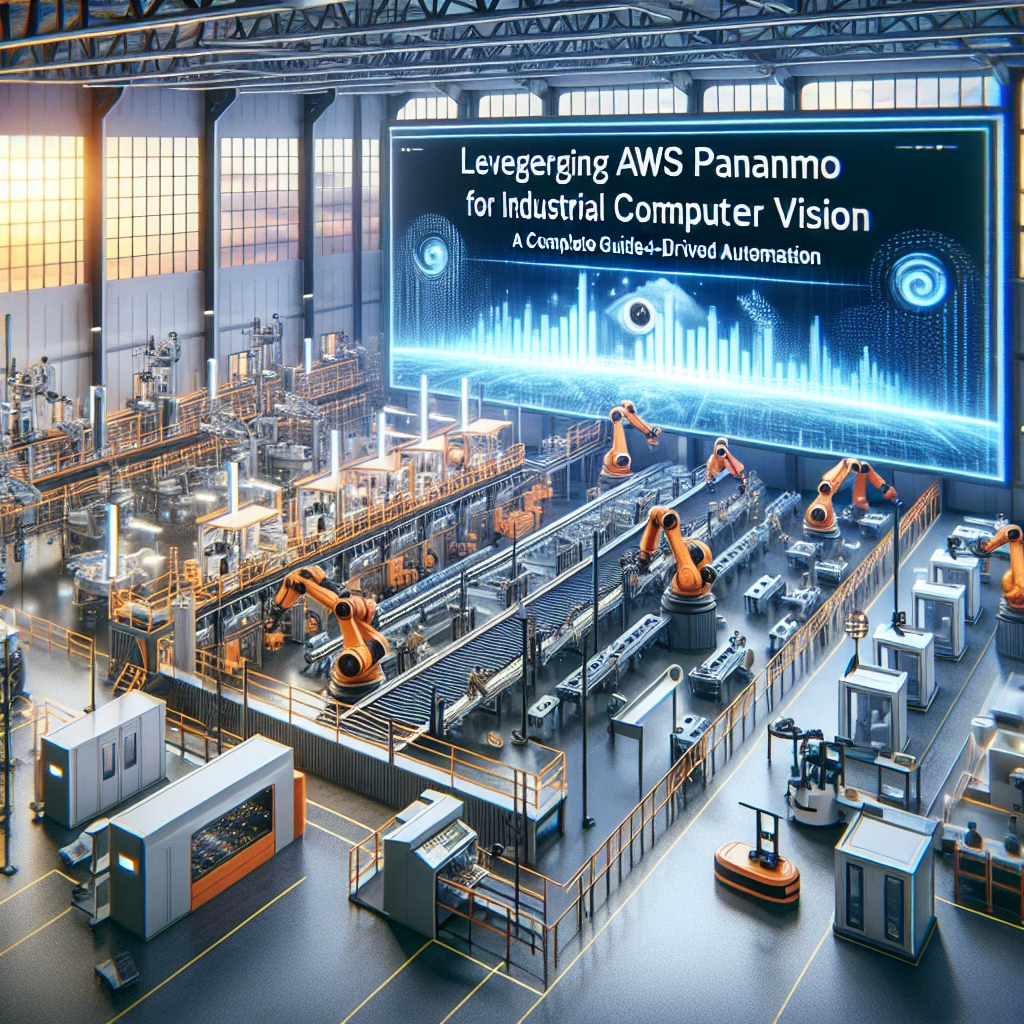AWS Panorama for Industrial Computer Vision
Summary:
AWS Panorama is Amazon Web Services’ edge computing solution designed to bring computer vision capabilities directly to industrial environments without requiring massive cloud computing infrastructure. It enables businesses to deploy AI models on existing surveillance cameras, automating defect detection, safety monitoring, and process optimization in manufacturing, logistics, and other industrial settings. This tool is particularly valuable for companies looking to integrate AI-powered visual inspections without overhauling their current hardware systems. By leveraging AWS Panorama, industries can reduce downtime, improve quality control, and enhance operational efficiency. For novices in AI, it offers an accessible entry point into industrial automation with scalable machine learning insights.
What This Means for You:
- Cost-efficient AI Deployment: By using existing camera setups, AWS Panorama reduces the need for expensive hardware replacements. Start small by integrating Panorama with a single production line to test its effectiveness before scaling up.
- Streamlined Industrial Inspections: AI-driven defect detection minimizes human error and speeds up quality checks. Train Panorama with labeled defect datasets early to improve model accuracy over time.
- Enhanced Workplace Safety: Automated monitoring identifies safety hazards like unauthorized facility access or missing PPE. Configure alert thresholds carefully to avoid false alarms that disrupt productivity.
- Future Outlook or Warning: While AWS Panorama simplifies industrial vision AI, its reliance on AWS infrastructure means long-term costs could rise with scaling. Additionally, model performance hinges on camera quality—low-resolution feeds may impact accuracy.
AWS Panorama for Industrial Computer Vision
AWS Panorama is transforming how industries harness computer vision by embedding artificial intelligence directly into existing camera networks. Unlike traditional cloud-based AI solutions that require constant data transmission, Panorama processes video feeds locally—an edge computing approach that minimizes latency and bandwidth costs.
How AWS Panorama Works
The AWS Panorama Appliance is a physical device that connects to on-premises IP cameras, ingesting video streams for real-time analysis. It runs custom computer vision models trained using Amazon SageMaker or imported from the AWS Marketplace. Key workflows include:
- Local Inference: Models process video frames onsite, sending only critical insights (e.g., defect alerts) to the cloud.
- Centralized Management: The Panorama console lets operators monitor multiple facilities and update models remotely.
- Hardware Flexibility: Supports NVIDIA Jetson-based appliances or AWS-managed devices.
Top Use Cases
Assembly Line Quality Control: Detecting manufacturing defects in automotive or electronics production with sub-millisecond latency.
Warehouse Optimization: Tracking inventory movement and identifying misplaced items using object detection.
Safety Compliance: Monitoring for OSHA violations like absent hardhats in construction zones.
Strengths
- Legacy System Integration: Works with cameras already deployed, avoiding capital expenditure.
- Pre-Built Models: AWS offers ready-to-use models for common tasks (e.g., person detection).
- Hybrid Architecture: Combines edge processing with AWS cloud services for analytics.
Limitations
- Camera Constraints: Requires RTSP-enabled IP cameras; analog systems need encoders.
- Model Training Complexity: Custom models demand labeled datasets—a hurdle for SMEs.
- Regional Availability: Some AWS machine learning features aren’t supported globally.
Implementation Best Practices
- Conduct a camera audit to verify compatibility (720p minimum resolution recommended).
- Start with a pilot area to refine model confidence thresholds before full deployment.
- Use AWS IoT Greengrass to synchronize Panorama data with other facility sensors.
People Also Ask About:
- Does AWS Panorama work with thermal cameras?
Yes, but requires additional calibration since most pre-trained models are optimized for visible-light spectra. - What industries benefit most from AWS Panorama?
Manufacturing, logistics, and energy sectors see the highest ROI due to repetitive visual inspection tasks. - How much networking bandwidth does Panorama consume?
Local processing reduces bandwidth needs by 90% compared to cloud-only systems, averaging 50-100Kbps per camera for metadata. - Can Panorama integrate with existing MES/SCADA systems?
Yes, via AWS IoT Core or custom APIs, though middleware may be needed for legacy protocols like OPC-UA. - What’s the typical deployment timeline?
Pilot projects take 4-8 weeks; full-scale rollouts require 3-6 months depending on camera infrastructure.
Expert Opinion:
Industrial adopters should prioritize model explainability—black-box AI decisions can undermine trust in critical quality control applications. While AWS Panorama lowers technical barriers, successful deployments require cross-functional teams combining OT personnel with data scientists. Emerging competitors like NVIDIA Metropolis may drive AWS to enhance Panorama’s 3D vision capabilities for complex geometries like welded joints or composite materials.
Extra Information:
- AWS Panorama Oficial Page – Comprehensive product documentation and case studies.
- AWS Industrial Blog – Technical deep dive on manufacturing use cases.
- Machine Design Article – Third-party analysis of edge vs. cloud tradeoffs.
Related Key Terms:
- Edge AI for manufacturing automation
- Industrial camera systems with AWS integration
- Real-time defect detection AI models
- AWS Panorama vs Azure Percept comparison
- Computer vision for warehouse inventory management
- Low-latency video analytics for factory safety
- Scaling AWS SageMaker models to industrial edge
Check out our AI Model Comparison Tool here: AI Model Comparison Tool
*Featured image generated by Dall-E 3





